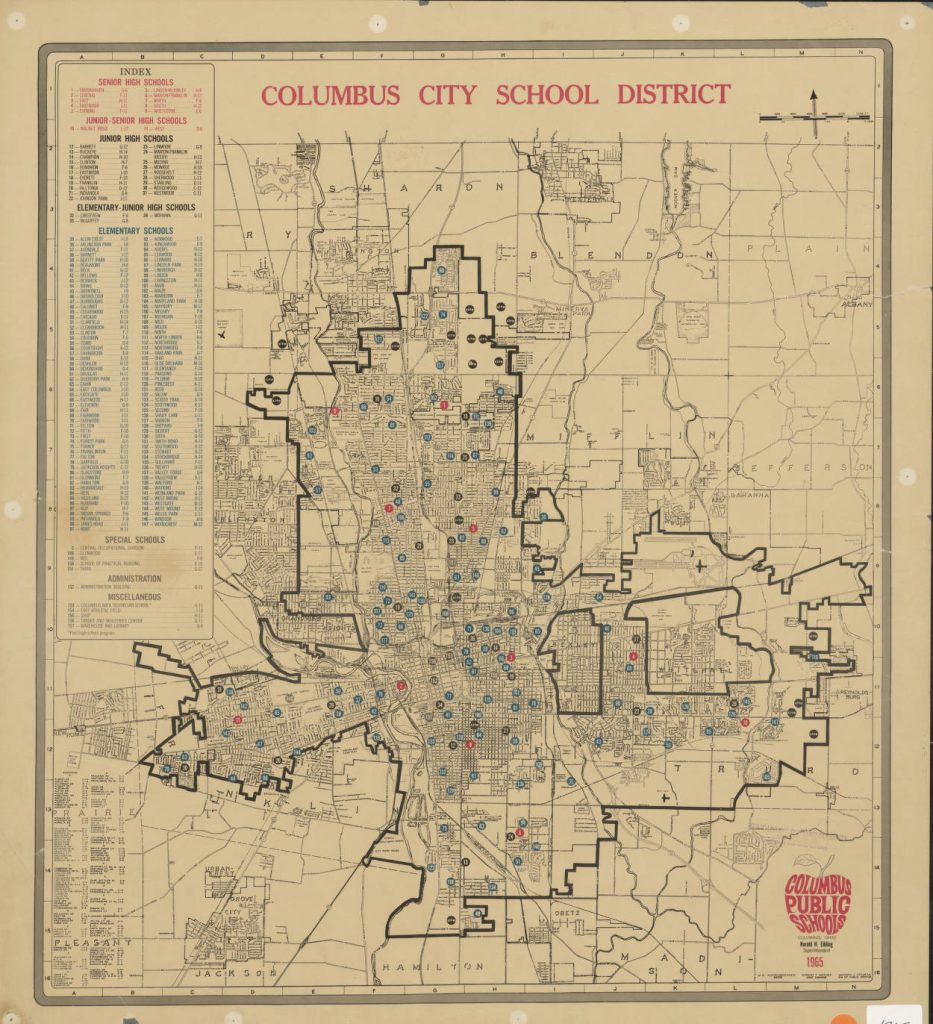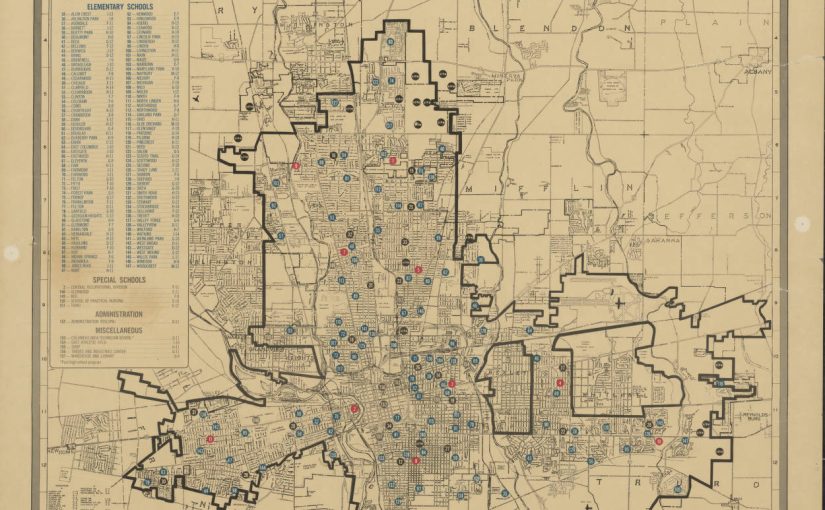The Ohio Department of Education and Workforce recently released their annual Ohio School Report Cards, now using “stars” instead of letter grades.
Columbus City School District was awarded 2 out of 5 stars. In 2019 CCSD got an overall D.
This has been the long term pattern, only interrupted by spurts of grade inflation and scoring fraud.
(Even changing from letters to stars cannot hide the many challenges the district faces.)

Despite being fully funded from a fresh levy and an annual budget of approximately $1.35 billion dollars, Columbus City School District struggles with low academic achievement, resource imbalances between schools, and ineffective administration. Even after spending over $17,500 per student CCSD has high student absenteeism, significant teacher turnover, and uneven implementation of educational programs that exacerbate these challenges. Bureaucratic inefficiencies prevent necessary reforms, hindering efforts to address the district’s diverse student needs. Furthermore, inequitable distribution of resources and outdated facilities continue to impact the learning environment, despite the financial resources available.

Breaking up Columbus City Schools District into four or five smaller districts presents several benefits, particularly in terms of governance, accountability, equity, and student outcomes. It can make schools better, improve how students learn, and help communities feel more connected to their local schools.
First of all, smaller districts are easier to manage. Right now, Columbus City Schools is very big, with over 46,000 students. When a district is so large, it can be difficult for the leaders to give attention to each school. By breaking the district into smaller parts, school boards can focus on the specific needs of each area. This means schools can get more help to solve their own problems quickly. Parents and teachers can also work more closely with local school leaders because they are more accessible. Allowing more localized governance ensures that decision-making is better aligned with the specific needs and priorities of individual communities.
With fewer schools to manage smaller districts can be more fair. In a big district like Columbus City Schools, some schools might have more resources, like newer facilities or better materials, while others don’t. *cough* Columbus Alternative High School *cough* When the district is split into smaller parts, each district will have its own budget. This allows leaders to make sure every school gets what it needs. This can also help students who are struggling with challenges like poverty or language barriers. Smaller districts can pay closer attention to these issues and provide better support.

Smaller districts can have an easier time encouraging excellence and competition. Without even realizing it, many times hard working teachers and staff can become discouraged when seemingly distant schools or teachers are rewarded or acknowledged for performing well. This is compounded when problems outside of their control contribute to a sense of futility. Smaller districts allow problems to be seen in local context, and success to be celebrated by the people who made it happen, not some central office distant from the effort.
While the city of Columbus can be intimidating with sprawl, our urban roadways allow swift travel from one side to the other. Rural school districts easily handle long bus rides to schools many miles from home, while urban students are bussed to the closest schools without any choice. With 4 or 5 smaller districts in the same area, families would be able to choose where to send their children, even across district lines. This would encourage smaller districts to do better to attract students and families. This means they will try to improve their programs, test scores, and school environment. When one district tries something new and it works, other districts might copy the idea, leading to more improvements for everyone. For example, one district might focus on science and technology, while another focuses on career and technical education. This variety helps meet the different needs of students.

Students, teachers, and administrators in smaller districts can also build closer relationships. In big districts, students and teachers often feel disconnected from the people making decisions. Smaller districts can make it easier for teachers and students to know each other and for students to get the support they need. This sense of community can make students feel more motivated and engaged in their schoolwork. It can also help reduce dropout rates because students feel more connected to their schools.
Teachers and staff will also benefit from working in smaller districts. Teachers can feel overwhelmed in a big district, especially if they don’t feel heard by the administration. Smaller districts can provide more opportunities for teachers to participate in professional development, collaborate with other teachers, and get the help they need to succeed in their classrooms. This can make teaching more enjoyable and improve the quality of education students receive.

Breaking up the district can also improve student performance. Smaller districts can focus more closely on improving test scores, graduation rates, and attendance. Students may get more personalized attention, and schools can try different approaches to help students succeed.
Another advantage is that smaller districts can operate more efficiently. Large school districts often have layers of bureaucracy that slow down decision-making. Smaller districts can respond faster to problems, such as fixing buildings or adjusting curriculum, because they have fewer people involved in the process. This can save money and allow more funds to go directly into the classroom rather than administrative costs.

Finally, breaking up the district can strengthen community ties. When schools serve smaller areas, parents and community members feel more connected to them. This can lead to more people getting involved in school activities, such as parent-teacher organizations, volunteer opportunities, and even school board meetings. A strong sense of community makes schools better places for students to learn and grow.
Although there are challenges to breaking up Columbus City Schools, such as figuring out how to fairly divide funding, and how parents would choose which school to send their children, the potential benefits make it an idea worth considering. We can give our hard working teachers and staff the breathing room they need to live up to the high expectations they place on themselves. By creating smaller districts, school leaders can focus on the unique needs of their communities, improve resources for all students, and help create schools where students, teachers, and parents feel more connected and engaged.
As long as Columbus City Schools are all lumped together the accomplishments of individual schools and teachers will be overshadowed by the challenges of the whole.
Resource: Ohio School Report Cards https://reportcard.education.ohio.gov/district/043802
Source: CCS faces backlash over school consolidation despite recent levy win
https://www.myfox28columbus.com/news/local/columbus-city-schools-ohio-ccs-faces-backlash-over-building-consolidation-despite-november-2023-election-levy-win-school-funding-money-property-taxes-revenue
Govt schools in Ohio create a harmful monopoly by limiting educational choices and controlling funding, restricting competition and innovation. This reduces parents’ options for better alternatives, leading to inefficiency, unequal resource distribution, and lower overall educational quality.
Breaking up this monopoly is crucial to maximizing Ohio education and innovation.

